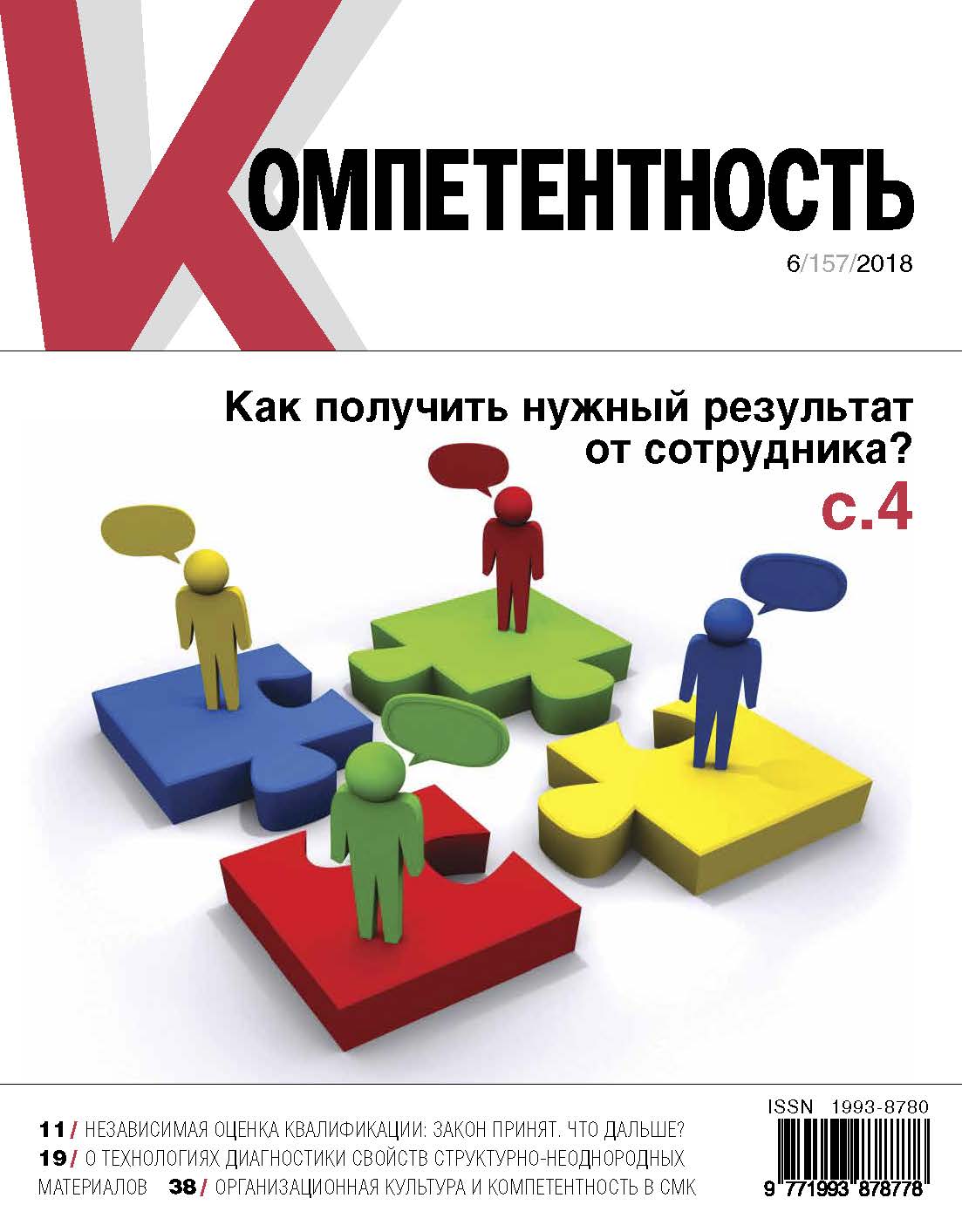Journal Kompetentnost': 6 / 157 / 2018
Articles
-
1
Individual Approach to Employees: Сontrol to Get the Desired Result
Authors: Prof. Dr. V.N. Voronin, Rector, FSAEI FVT Academy of Standardization, Metrology and Certification (training) (ASMS), Moscow, Russia, prvoronina@asms.ruG.V. Fomicheva, Lecturer, FSAEI FVT ASMS, Moscow, Russia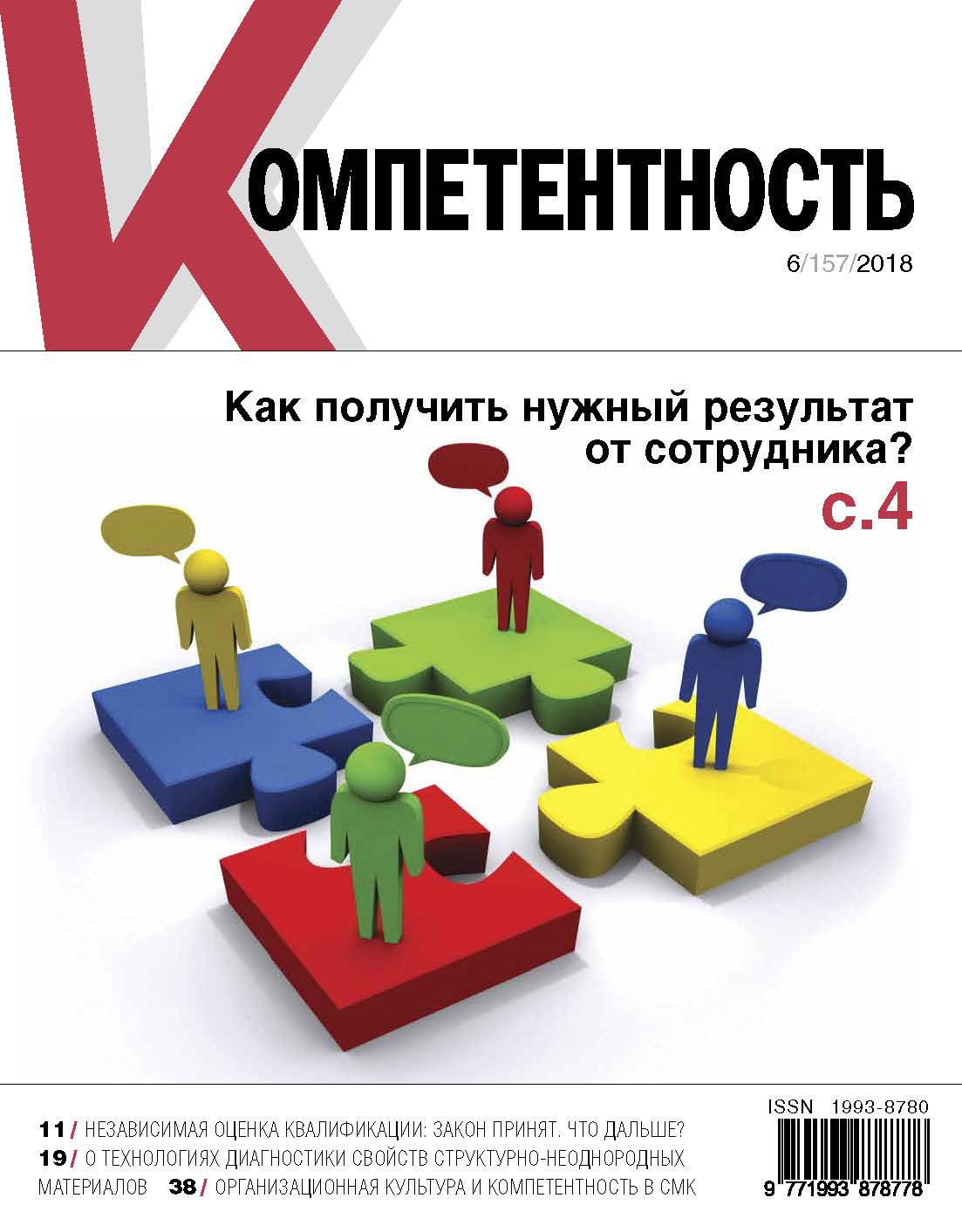 The theme of our past psychological practice was the fulfillment by the staff of all
The theme of our past psychological practice was the fulfillment by the staff of all
typological categories of the task set by the head. How the manager should monitor
the performance of the task by each employee, we will talk today.
Let’s analyze such important concepts as control point and point of no return, let’s
talk about the so-called traps arising in the process of control, which the manager does
not want to get into. We will discuss the topics of individual control, feedback, logical
cause-effect chains of the situation, we will talk about the general rules of constructive
criticism, its individual forms, and we will briefly dwell on praise. I want to note that
the goal of all the above-mentioned events is to achieve that the task was accomplished
with the desired result, qualitatively and in due time.
Download -
2
Independent Assessment of Qualifications: the Law is Passed. What’s Next?
Authors: N.R. Verbitskaya, Head, Personnel Department, FBU Nizhny Novgorod CSM, Nizhny Novgorod, Russia, verbickaya@nncsm.ru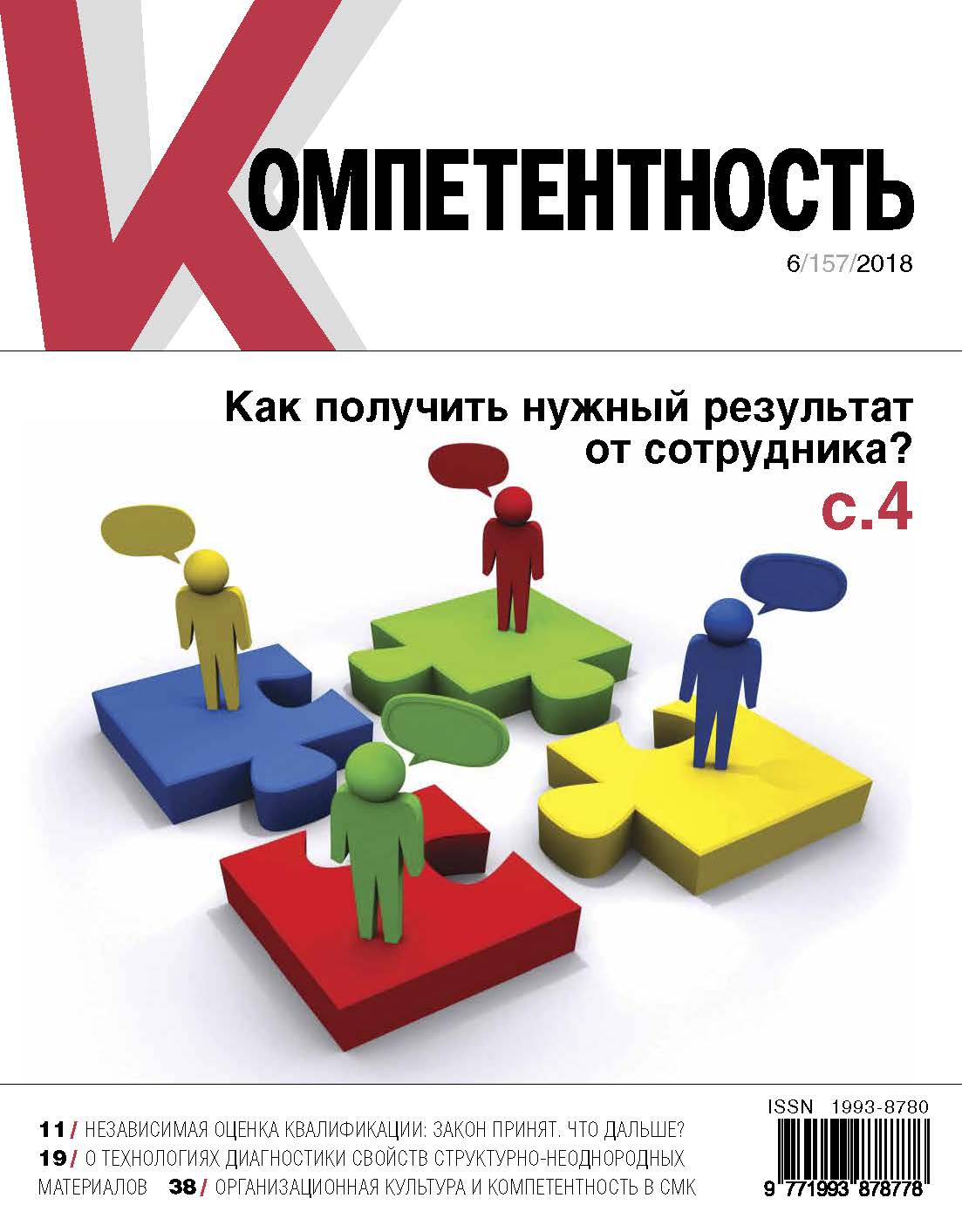 From the beginning of last year, the Federal Law of 03.07.2016 N 238-FZ On
From the beginning of last year, the Federal Law of 03.07.2016 N 238-FZ On
Independent Assessment of Qualifications came into force, and the professional
standard Metrology Specialist was put into effect. Now the employer, with the consent
of the employee, can check whether the qualification of the latter corresponds to the
requirements of the professional standard. In the article I consider the procedure for
conducting an independent evaluation of qualifications.
I analyze its merits, ways of conducting and results. Heads of metrological services
will now be able to assess the qualifications of employees by sending them to the
evaluation centers for qualification for the professional exam. This is especially true
for metrological services, in which there is a small number of specialists in metrology,
and there is no one to assess the staff for compliance with the work functions and job
descriptions.
Download -
3
Analysis of the Effectiveness of Technologies for Diagnosing the Properties of Structurally Heterogeneous Materials
Authors: Dr. Prof. А.А. Barzov, Leading Researcher, Center for Hydrophysical Research, Faculty of Physics, M.V. Lomonosov Moscow State University, Moscow, Russia, a.a.barzov@gmail.comE.S. Golubev, Leading Engineer, Department of Space Structures, ACC of the P.N. Lebedev FIAN, Moscow, Russia, golubev.ev@asc.rssi.ruDr. V.М. Korneeva, Professor, Metrology and Interchangeability Department, N.E. Bauman MSTU, Moscow, Russia, v_korneeva@list.ruDr. S.S. Korneev, Associate Professor, Technology of Rocket and Space Engineering Department, N.E. Bauman MSTU, Moscow, Russia We set the task of developing tools for operational control and diagnostics of the
We set the task of developing tools for operational control and diagnostics of the
instability parameters of structurally heterogeneous properties of materials obtained
by using discrete form-building technologies. Using the method of expert-analytical
evaluation, we formulated functional-essential criteria characterizing the potential
of various diagnostic methods.
We proposed a phased algorithm for realizing ultrasonic diagnostics in determining
the variable anisotropy of the physical and mechanical properties of materials.
The results of research of information-diagnostic possibilities of application of the
expert-analytical analysis in the early stages of the life cycle of promising products
are presented. As a result of the analysis, some results obtained by various technologies
are presented, including discrete-additive laser sintering. And from the analysis of these
data, a close correlation with the results of the performed EAA is seen, which confirms
the scientific and applied significance of the study.
Download -
4
Laboratory Cabinets Quality for the Storage of Flammable Liquids
Authors: N.S. Naydenova, Graduate Master, Dmitry Mendeleev University of Chemical Technology of Russia, Moscow, Russia, nnaydenova94@mail.ruDr. G.E. Smirnova, Associate Professor, Standardization and Computer Graphics Department, Dmitry Mendeleev University of Chemical Technology of Russia, Moscow, RussiaI.A. Grishin, Deputy of General Director, LLC Technologies of Fire Safety, Moscow Region, RussiaP.A. Zhil’tsov, Head, Testing Laboratory ТPB ТЕSТ, LLC Technologies of Fire Safety, Moscow Region, RussiaDr. Kh.A. Nevmyatullina, Associate Professor, Dmitry Mendeleev University of Chemical Technology of Russia, Moscow, Russia, knevm@mail.ru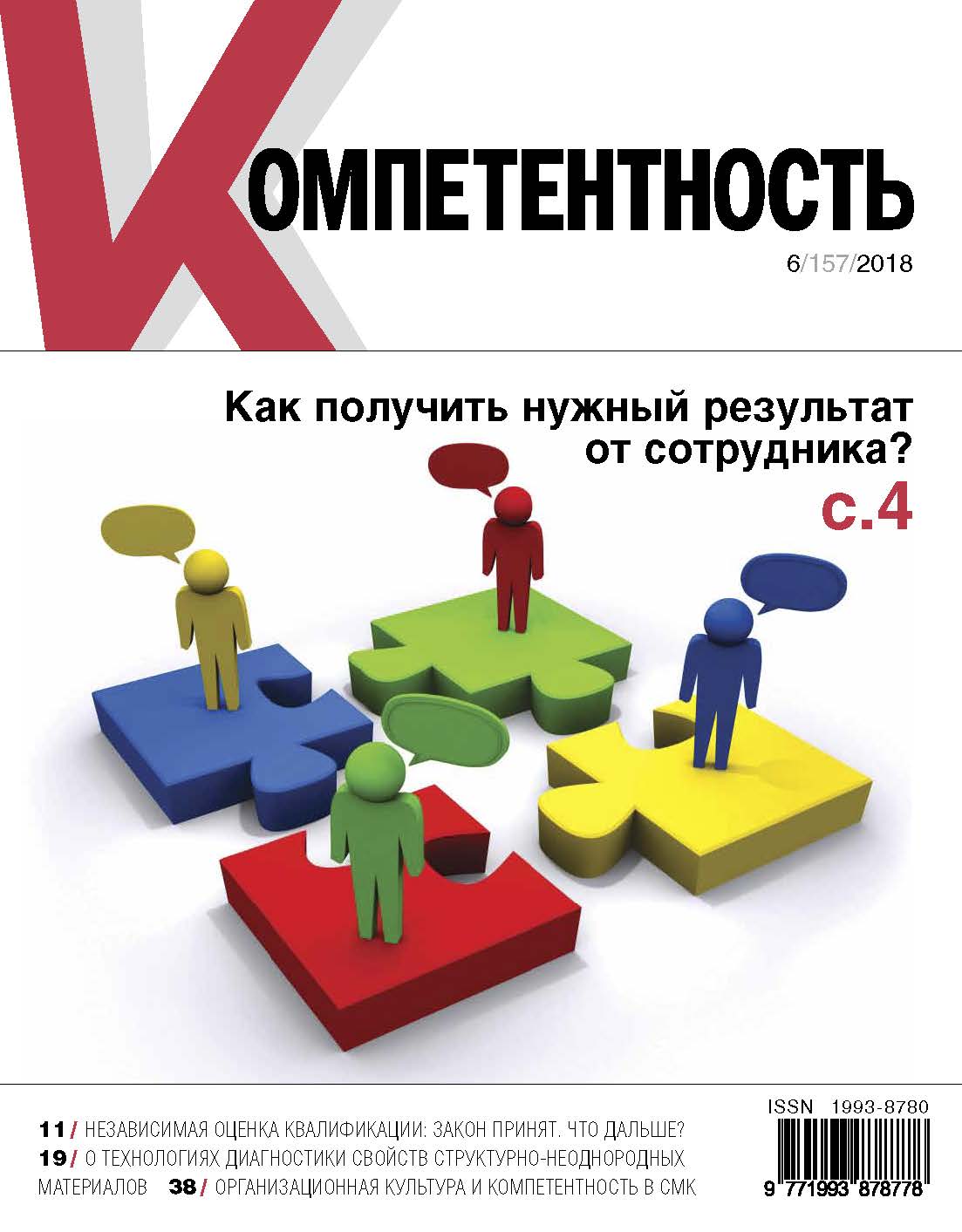 We consider the special conditions of operation of laboratory furniture, which assume
We consider the special conditions of operation of laboratory furniture, which assume
the use of certain materials in the production of this product with the appropriate
indices of safety and resistance to aggressive media. It is known that a laboratory
cabinet for the storage of flammable liquids (LVS) should provide a barrier preventing
the activation of LVS in case of fire from the outside of the cabinet. Unfortunately,
at present there are no documents in the field of standardization that regulate
the procedure for testing cabinets for storage of fire extinguishing liquids. In this
connection, we developed and tested the test procedure for fire resistance of cabinets
for storing LVS. We believe that this solves the problem of the absence of domestic
regulatory documents in this area.
Download -
5
Job Description Influence on the Organization of the Labor Process in the Company
Authors: V.V. Yushin, Lecturer, Ivanteevka Branch, FSBEI HE Moscow Polytechnic University, Moscow, Russia, wladgit@gmail.com In the Russian legislation there is no compulsory requirement for an organization
In the Russian legislation there is no compulsory requirement for an organization
to have and submit to the future employee such a normative act as a job description.
It is believed that all the duties of the employee are listed in the employment contract.
However, the job description is of great importance in the management of human
resources. I believe that the availability of a quality job description can facilitate
the work of recruitment specialists, and the applicant for a vacancy, having studied
the requirements of the instruction, gets an opportunity to assess in advance the
employer’s requirements, his abilities and make a measured decision on getting
to work. The enterprise local act, which describes the duties of the personnel,
enables management to make a fair assessment of the contribution of each employee
to the production process, I also believe.
Download -
6
Organizational Culture and Competence in the Quality Management System
Authors: Assoc. Prof. Dr. E.V. Vorontsov, Professor, Organization and Management Department Belarusian State Economic University, Ratomka, Minsk Region, Republic of Belarus, vev1941@tut.by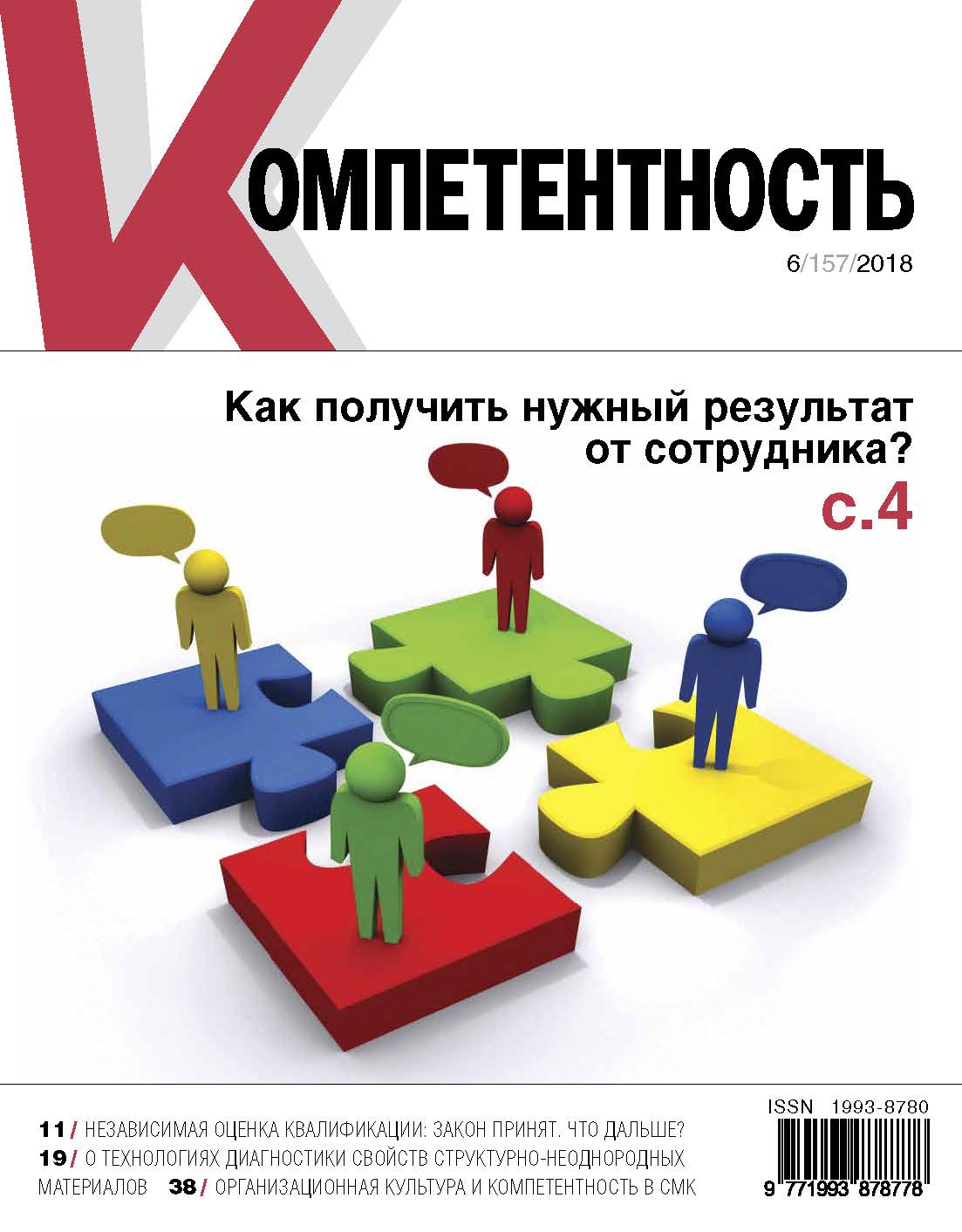 I considered the role of organizational culture and initiative in acquiring competence.
I considered the role of organizational culture and initiative in acquiring competence.
The organizational culture is a tool that ensures the development of an initiative aimed
at acquiring competencies that ensure high quality, productivity and labor performance,
I believe. Knowledge should be perceived by management not as an instrument, but as a
mode of action, transformed into the ability to act and understand.
The mobilizing organizational culture determines the behavior of the personnel
of the collective, makes it initiative and highly productive, stimulates the acquisition
of knowledge, skills and skills, and increases the professional competence of the staff.
Values in the organization are: diligence, labor discipline, mastering of effective working
methods, flexibility and rationalization of work, initiative, ensuring employees’ loyalty
to leadership, using effective methods of communication and cooperation, methods of
operational management.
The role of organizational culture and initiative in acquiring competence is
considered. I’m argued that the corresponding organizational culture is a tool that
ensures the development of an initiative aimed at acquiring competencies that ensure
high quality, productivity and work efficiency. Knowledge should be perceived by
management not as an instrument, but as a mode of action, transformed into the ability
to act and understand.
Download -
7
Methodology for Estimating the Uncertainty of the Results of Working Standards Calibration and SR Hardness
Authors: K.K. Savrovskiy, FBI Nizhny Novgorod Center for Standardization of Metrology, Nizhny Novgorod, Russia, mail@nncsm.ruDr. V.G. Kutyaykin, Director, FSAEI FVT ASMS Nizhny Novgorod Branch, Nizhny Novgorod, Russia, asms-nn@mail.ru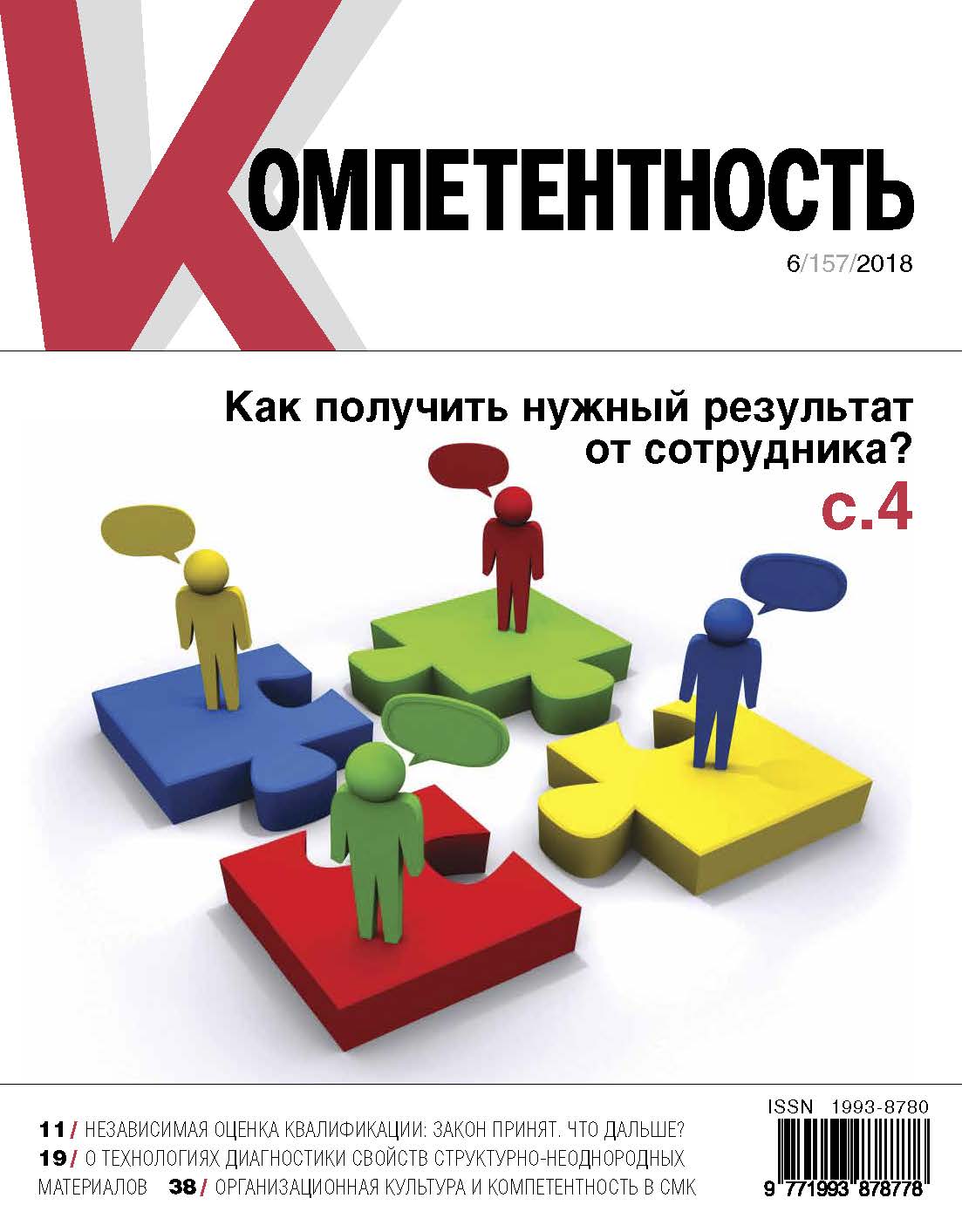 It is a question of the main provisions and the transfer of a hardness unit according
It is a question of the main provisions and the transfer of a hardness unit according
to the Rockwell scale from the standards of units of quantities. The general provisions
and the procedure for transferring a hardness unit according to the Rockwell scales
from the standards of units of quantities are set forth. Practical examples of calculations
of uncertainty of calibration results are given.
We have shown the possibility of correctly combining the description of accuracy
indicators in the form of uncertainty and accuracy indicators established in the state
verification schemes and/or descriptions of types of measuring instruments.
It is necessary to change the rules for building state verification schemes related
to measuring instruments that can be used as working standards, we believe. At the
same time, the need for a change in the rules for the construction of state verification
schemes relating to measuring instruments that can be used as working standards has
been identified.
We proposed to consider the discharge according to the state verification scheme
as a metrological characteristic of the measuring instrument, and to normalize
the measuring instrument with the error, and for the standard the confidence limits
of the error. Accordingly, the reverse option is possible.
Download



